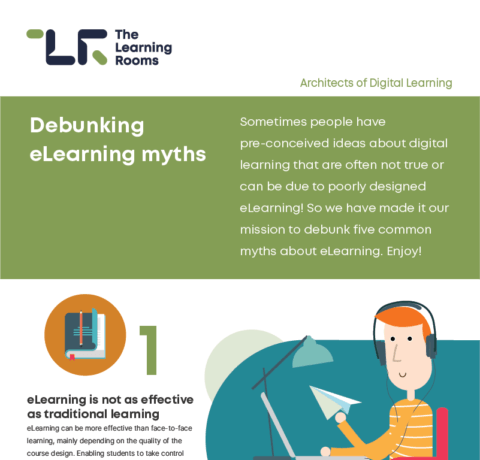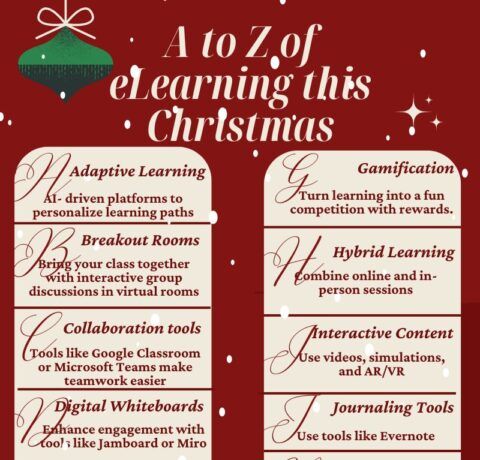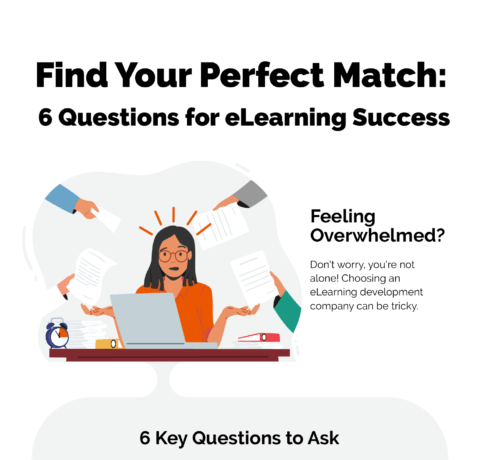The Top 15 LMS Stats and Facts For 2015 Infographic
There are many research studies, polls, and reports that offer us invaluable insight and forecasts about Learning Management Systems. The Top 15 LMS Stats and Facts For 2015 You Need To Know Infographic presents the important LMS Stats and Facts For 2015 that will give you a glimpse into the future of LMSs and who are the key players today. If you’re looking for a new LMS, then these figures may even help you fine-tune your list of necessary features and functions your LMS should have.
To find out more please visit: Top Learning Management System Statistics and Facts For 2015
- The LMS Market
It is estimated that the LMS Market will grow by about 23.17% [1] between the years 2017 and 2018. Currently, it’s a $2.5 billion industry in the corporate sector, without calculating revenue from the academic sector, as well [5]. - LMS Popularity In Terms Of Number Of Users
In terms of actual users, Moodle has the most users in the LMS market. It currently boasts an estimated 73.8 million users. Edmodo comes in second and Blackboard rounds out the top 3, with around 20 million users each [2]. - LMS Popularity In Terms Of Number Of Customers
Satisfied customers can give a clear indication of who is successfully building customer loyalty through effective business practices and a winning product. Edmodo has the largest number of customers, an estimated 120k. Moodle is second on the list, with 87.1k customers and Collaborize Classroom is third, with 48k customers [2]. - Cloud-Based LMSs vs. Installed LMSs
In 2015, there seems to be a tendency towards cloud-based LMSs, as 87% of the respondents were found to use a web-based LMS, compared to only 13% who have an installed LMS [5]. - SaaS (Software-as-a-Service) LMSs
At the end of 2015, the SaaS market revenue is expected to be about $22 billion. The most popular cloud-related corporate projects are:
1. Internet Private Cloud (35%),
2. Cloud Provider Assessment and Strategy Planning (33%),
3. Infrastructure-as-a-Service (IaaS) at (31%), and
4. SaaS (30%) [1]. - LMS Usage Per Industry
LMS usage is not only limited to corporations and educational institutions. Recent Report [5] shows that the top industries that use LMS software are:
1. Education 21%
2. Technology 12%
3. Manufacturing 9%
4. Healthcare 7%
5. Consulting 7%
6. Software development companies 4%
7. Non-profit organizations 3%
8. Real-estate 3%
9. Event management 3%
10. Governmental institutions 2% - LMS Access
How users access LMS systems is another aspect to consider. A recent survey [4] demonstrated that:
1. 89% access LMSs from their desktop computer,
2. 76% from their laptop,
3. 25% from their tablet, and
4. 19% from their smartphone - User Satisfaction With LMSs
In terms of user satisfaction, 63% of users seem to be very satisfied (25%) or just satisfied (38%) with their LMS [5]. Other aspects on which users seem to perceive that LMSs have a positive impact include:
1. Higher course completion rates (65%),
2. Cost effectiveness of training (45%),
3. Increase in employee’s productivity (37%) and
4. Higher retention rates (21%) [5]. - LMS Perceived Benefits
With respect to perceived LMS functionalities:
1. 73% of those surveyed, indicated a belief that LMSs main function is testing,
2. 68% training administration, and
3. 53% record keeping [4].
Though from another study we have additional information about user perceived benefits, indicating their belief that:
1. LMSs may be ideal for blended learning (53%),
2. They can function as portals (53%), and
3. That they may be excellent tracking tools (41%) [5]. - LMS Perceived Functionality Deficiencies
Among the desired features users believe their current LMSs are lacking are:
1. Live and video conferencing options (38%),
2. Mobile learning options (27%),
3. Gamification (22%), and
4. Social learning options (20%) among others [5]. - LMS Corporate Investment Plans
No significant changes are expected in 2015 with respect to corporate investment plans on LMSs, as 90% of small-to-medium businesses and enterprises indicated that their 2015 budget to spend for LMSs is approximately the same with previous years [4]. - LMS Customer Loyalty
Customer loyalty is another important indicator of the perceived impact of the LMSs on users. Research has indicated that
1. Only 31% of LMS buyers have switched from their previous LMS to a new one.
2. On the average, 32% of organizations have been using their actual LMSs for the last 2 to 5 years [5]. - Reasons For Switching To Another LMS
Despite proved loyalty to their current LMS, organizations that have decided to switch to another LMS solution, express as main reason for such a shift the following [5]:
1. 66% additional features required
2. 28% lack or inadequate provider’s support
3. 22% the LMS was too difficult to be used
4. 13% changing needs due to rapid organizational growth that the current LMS system could no longer support
5. 6% have switched to another LMS system because of the cost, fact that shows that organizations are willing to pay for LMS solutions that meet their needs. - LMS Selection Criteria
The most important factors that influence the purchasing decision of an LMS, based on the Capterra’s LMS research [5] are:
1. Functionality by 53%
2. Price by 32%
3. LMS support provided by 5%,
4. Implementation training 4%
5. Company reputation by 3%
6. Software popularity by 3% - Time Needed For Making A Purchasing Decision
With respect to the time needed to make a final decision about the proper LMS to buy, research has shown that:
1. 69% of decision makers’ need up to six months before placing an order.
2. 35% of these decision makers evaluate four or more LMS alternatives before making their final decision.
3. 21% of these decision makers evaluate three LMS alternatives.
4. 28% of these decision makers evaluate just two LMS alternatives.
5. 6% of these decision makers admitted that they have reached to a decision after evaluating one LMS only [5].
An LMS is an invaluable tool for eLearning professionals and all signs point to it being so for many years to come. Hopefully these key LMS statistics and facts for 2015 have offered you the information you need to choose the learning management system that's just right for your learners' needs.







You can adjust your cookie preferences here.